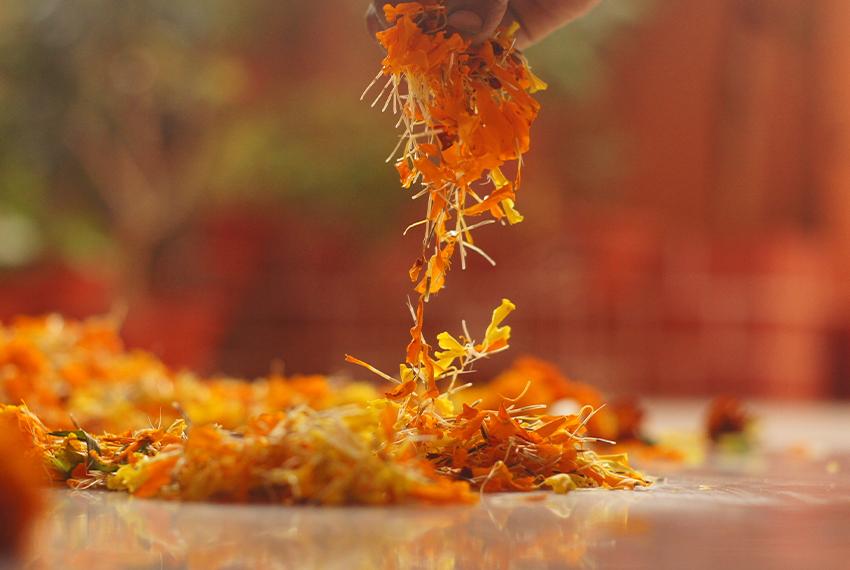When monsoon bids adieu to South India, Nature is apparent at its dramatic best, as the sun rays have luster and the paddy fields, wild bushes and deep valleys sing in tune with the rhythm of nature, brimming with life The resplendent site of Kerala’s official festival, Onam, sets the pageant for a rich intensity of color, a fiesta of dance, music and sumptuous food.
History has it that King Mahabali was cherished as the unparalleled king for the Malayali community. He still retains an unchallenged place in the hearts of its people. He is known to have sustained a world for his people in which everyone lived happily, inequality and the plentitude led to contented lives. The Dutas were enraged with the immense popularity of him as they detested the time when his piety would enable them to rule Heaven as well. Thus, they pleaded Lord Vishnu to get rid the Earth of Mahabali. Lord Vishnu knew that true to his name, Mahabali possessed exemplary courage and warrior skills. Thus, the only way to con him was with treachery and malice. Thus, he took his fifth Avatar, as Vamana, a dwarf Brahman, and pleaded Mahabali for grace and pity. Assuming this role, it was easy for him to manipulate him into sympathizing and requested him to offer land to him. As the ever-willing king agreed to it, without a second thought. Deceitfully, he started to grow in size and covered the earth and sky in two steps. Humbly, Mahabali placed his head below the foot as Vamana progressed for the third step, sending him into the nether world, Pataala. However, for his good deeds and succumbing to the laments of people for the unchallenged king of Malayalli hearts, he was allowed to return to Kerala every year just after the crops were harvested. His spirit is known to have visit the state of Kerala, beginning of Chingam, the first month of Malayalam Calendar. The celebration is known to have started during the Sanhgam period and memoirs of celebration are found to have existed from the time of 800 AD.
With its stipulated customs and traditions that integrate culture and nature that uphold the small joys of life, it calls for uncomplicating life and count the blessing, besides maintain harmony in symphony with the world around us. Onam, a ten-day revelry that is also redolent with legends and myths, has taken the shape of a universal and secular festival, celebrating the spirit of the meaning of its word, as Onam means prosperity. Synonymous with the festivities that commemorate the season of harvest, the joyous occasion brims with life as the entire state of Kerala displays its prowess to demonstrate the jubilation of Lord Mahababali’s subjects and impress upon him that his people are happy.
To welcome their revered ruler, to impress that his people are happy, the reminisce on golden times experienced in the era of Mahabali’s reign, the ten-day revelry is a synergy of nature and culture. Thus, Atham, the first day of the celebration, according to folklores, is the day when the king starts his preparation every year to descend to visit his people and kingdom. A major aspect of Onam is to celebrate the bonds with nature, and thus, respect is offered by way of an all-encompassing tribute to it.
Pollakam, as a way of celebrating the festival of flowers, that also happens to be the other name for Onam, is a ritual where people draw intricately designed floral arrangements, to welcome the lord. Clay images depicting him and Vishnu are placed in the courtyards. The courtyards are also pronounced by Kaikottukali, a beautiful amalgamation of Kath, story and kali, dance. It is an evolved art that resonates beauty of literature, music, dance, painting and acting. Women and children exhibit deeper concoctions of tradition, coruscating culture by dancing around the bronze lamp called Nilavilakku.
The spectrum of activities involves an entourage of processions of Pulikalli, in full grandeur and grandiose. Guided as tigers with masks and painted faces, the exciting beats of musical ensembles, rending color and gaiety to reverberate celebration. Snake boat race, the name borrowed from the shape of the boat used for racing, is the pride of its people and particularly featured on River Pampa. It attracts visitors to the sacred site and witnesses the enthralling held a day before Thiruonam is an enthralling sight to behold as hundreds of boats with its oarsmen racing their way with cheers from the thousands of onlookers who flock to this sensory delight of adrenaline and coruscating culture.
Onam feast, Sadya, is the highlight of the season. The 9-course meal is an indispensable part of a splendid feast. Traditionally made with seasonal vegetables, the culture is captured in the Malayalam proverb, “Kaanam Vittum, Onam Unnanam, which means one must never, ever, miss the Onam lunch at any cost, and rightfully give away the assets to afford the feast”. Such is the pursuit of traditional devout and entice of this festival among Keralites.
Onam also awakens the anticipation of good times ahead, the memories of an age where prosperity, equality and brotherhood prevailed in best spirits, in consensus with the co-existence of God’s other creations. It serves as a reminder for self-realization, spread dharma, remembrance, humility and sacrifice.

